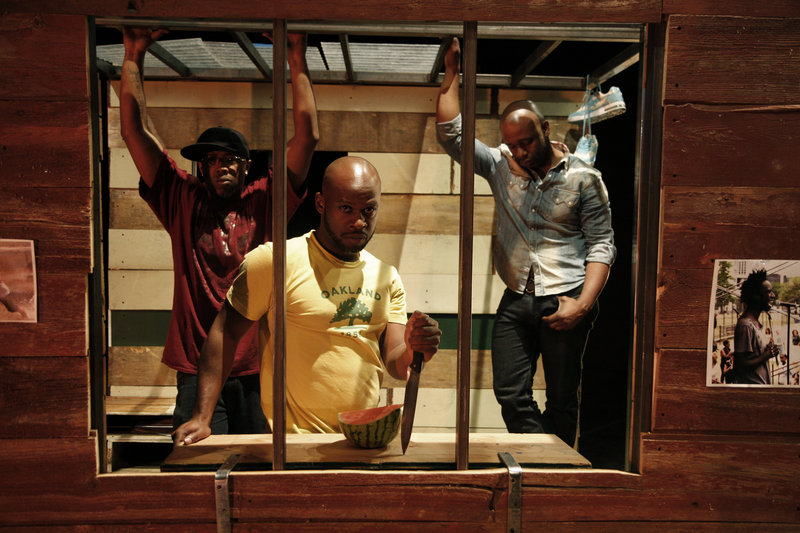Marc Bamuthi Joseph is no stranger to Bates College.
A choreographer, hip-hop artist and spoken-word performer from Oakland, Calif., Joseph has presented at the Bates Dance Festival and returned to campus many times over the years to work with students and faculty on various ideas and projects. During the past few months, he has engaged students in many disciplines about the intersection of art, the environment and social change.
Joseph will be back in Lewiston this weekend to present his multimedia production, “red, black & GREEN: a blues.” In the piece, he and his collaborators present personal stories about the impacts of a deteriorating environment.
Called “as smart and provocative as it is breathtakingly beautiful” by the San Francisco Chronicle, “red, black & Green: a blues” combines spoken word, music, dance and a dynamic stage design. The full-length performance piece is designed to inspire a conversation about environmental justice, social ecology and collective responsibility, said Laura Faure, director of the Bates Dance Festival.
This piece involves seven artists from diverse disciplines: writer-performer Joseph; director Michael John Garces; choreographer Stacey Printz; drummer/beatboxer Tommy Shepherd; documentary filmmaker Eli Jacobs-Fantauzzi; lighting designer James Clotfelter; and media designer David Szlasa.
Joining Joseph on stage are Shepherd, dancer-actor Traci Tolmaire and vocalist-visual artist Theaster Gates, who also designed the set.
Joseph developed the piece through a series of festivals he has held across the U.S. These “Life is Living” events yield testimony as source material.
Interviews, poems, films and murals from “Life is Living” have become words, dance and images that express the challenge of living green where violent crime and poor education are more of a threat than ecological crisis, and that reveal emerging definitions of environmentalism in these communities.
The production is composed of two sections. The first, “The Colored Museum,” invites spectators on stage to look into the windows of installations that represent four urban regions, and stories and movements from those areas.
In “Colors and Muses,” audience members return to their seats and watch as the piece extends beyond conversation and focuses on central figures in Houston, New York, Chicago and Oakland.
Send questions/comments to the editors.



Success. Please wait for the page to reload. If the page does not reload within 5 seconds, please refresh the page.
Enter your email and password to access comments.
Hi, to comment on stories you must . This profile is in addition to your subscription and website login.
Already have a commenting profile? .
Invalid username/password.
Please check your email to confirm and complete your registration.
Only subscribers are eligible to post comments. Please subscribe or login first for digital access. Here’s why.
Use the form below to reset your password. When you've submitted your account email, we will send an email with a reset code.